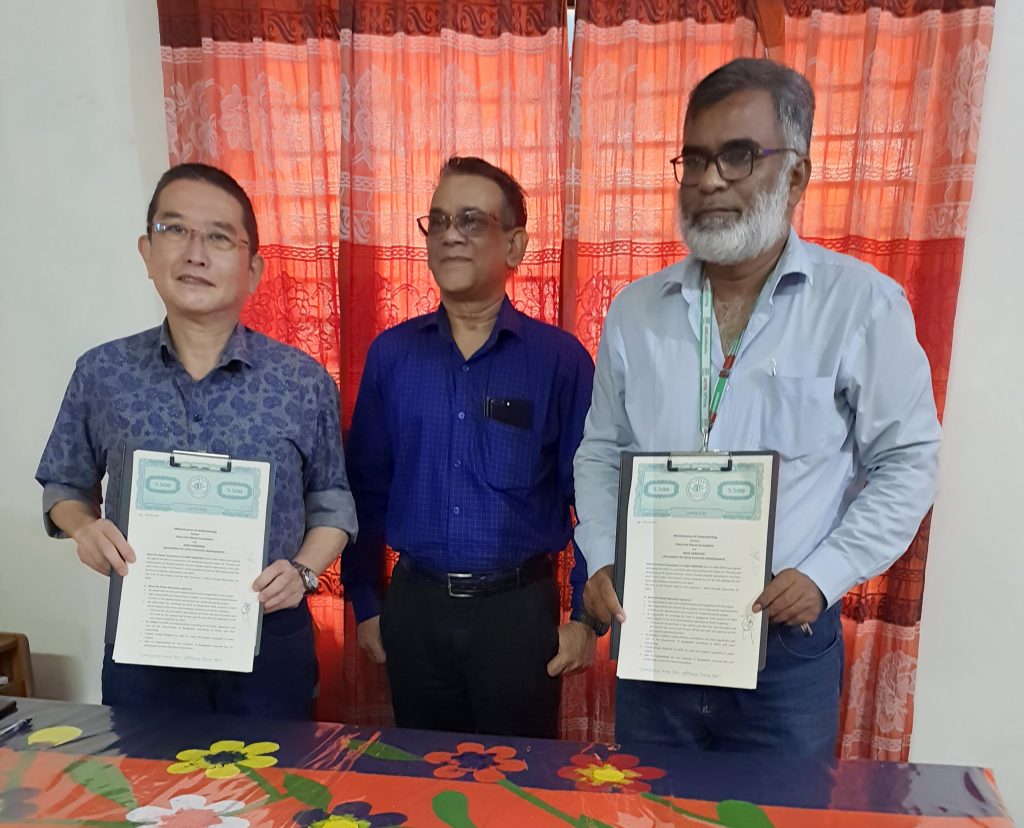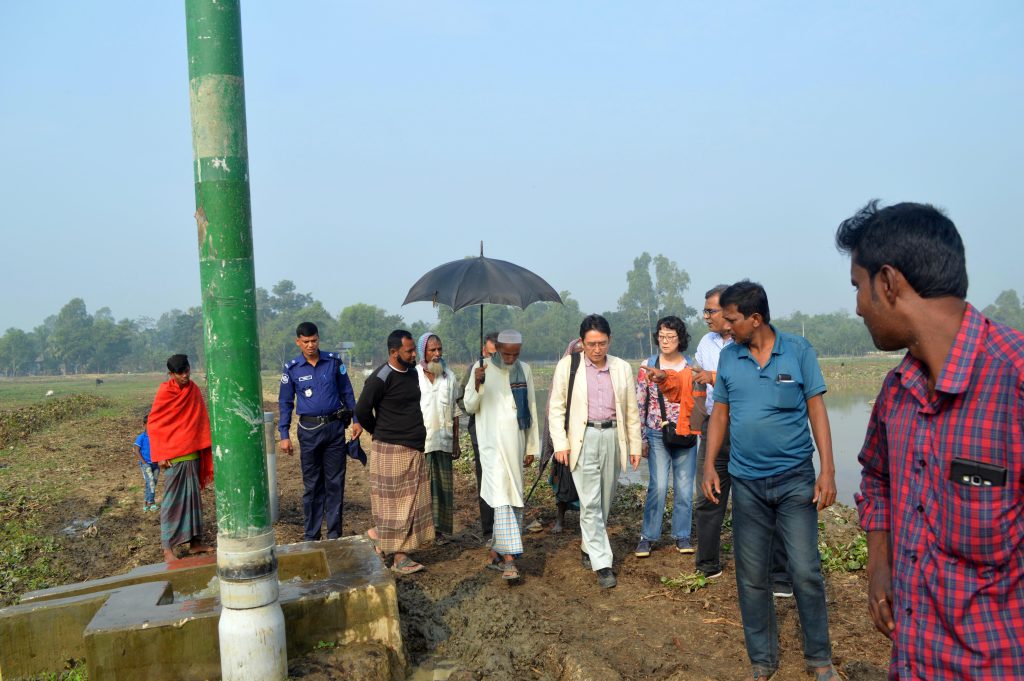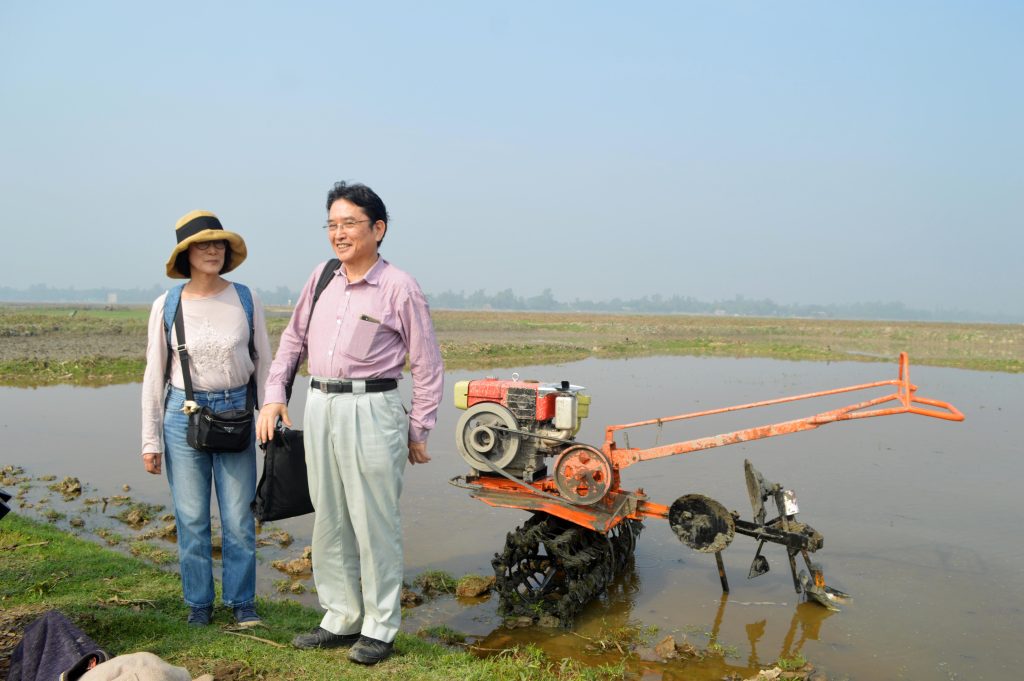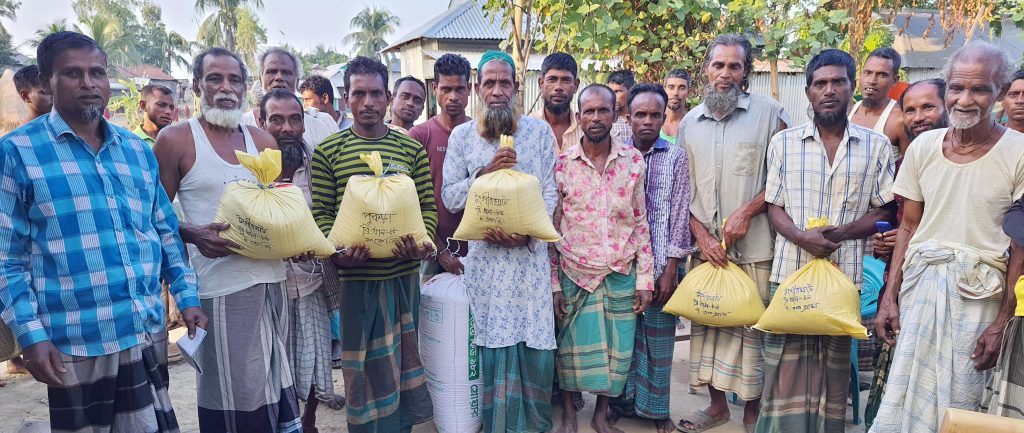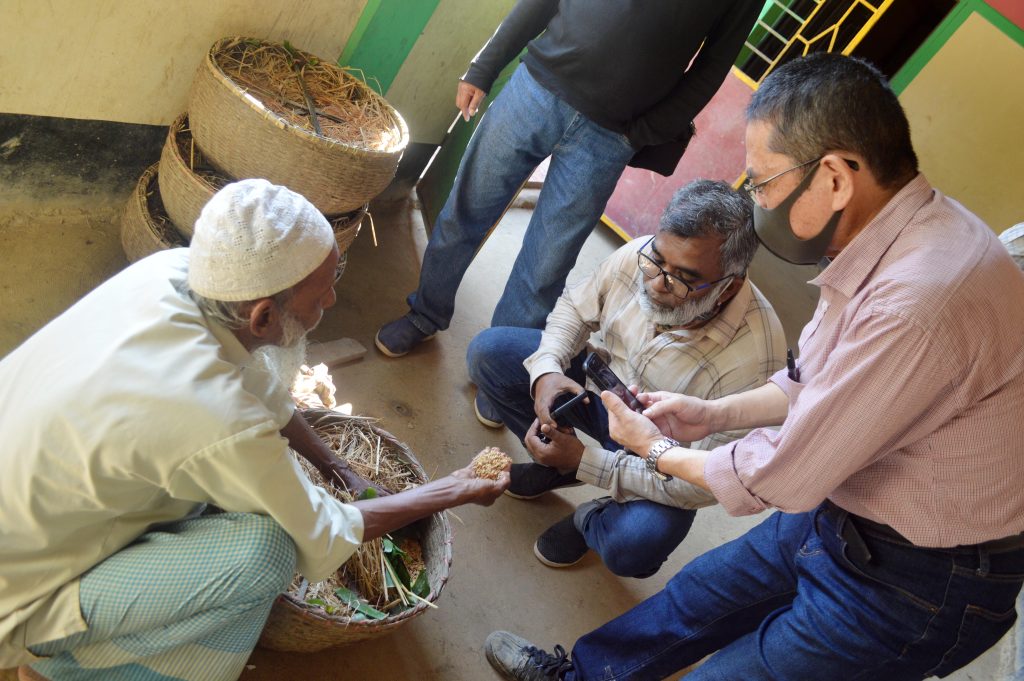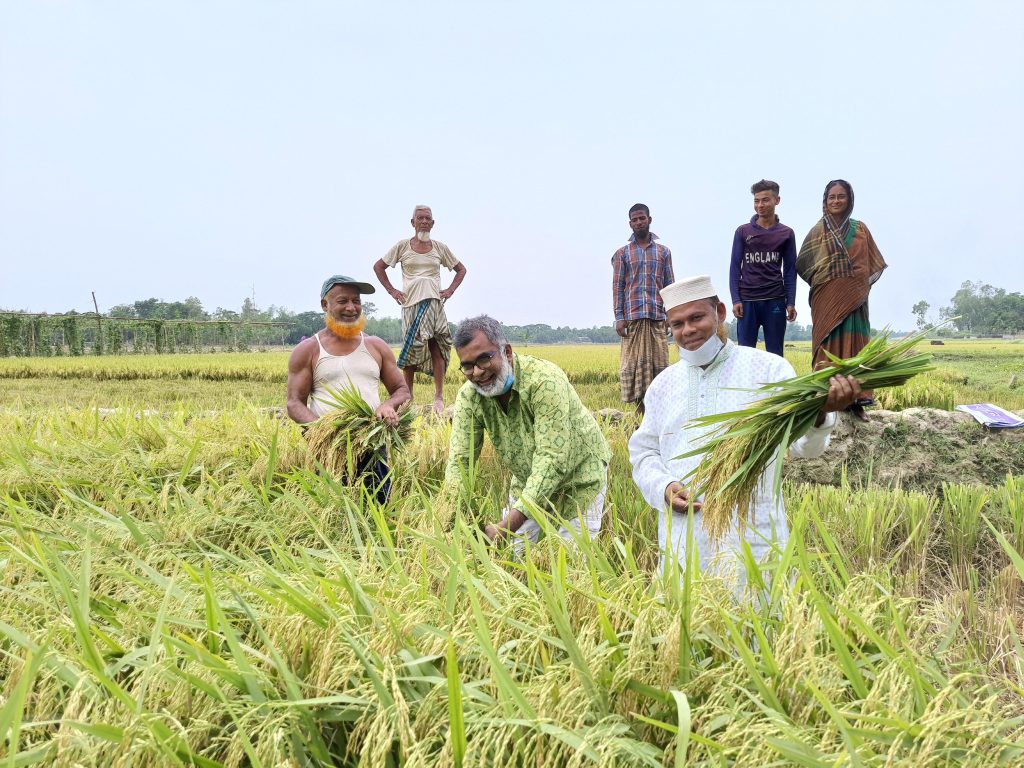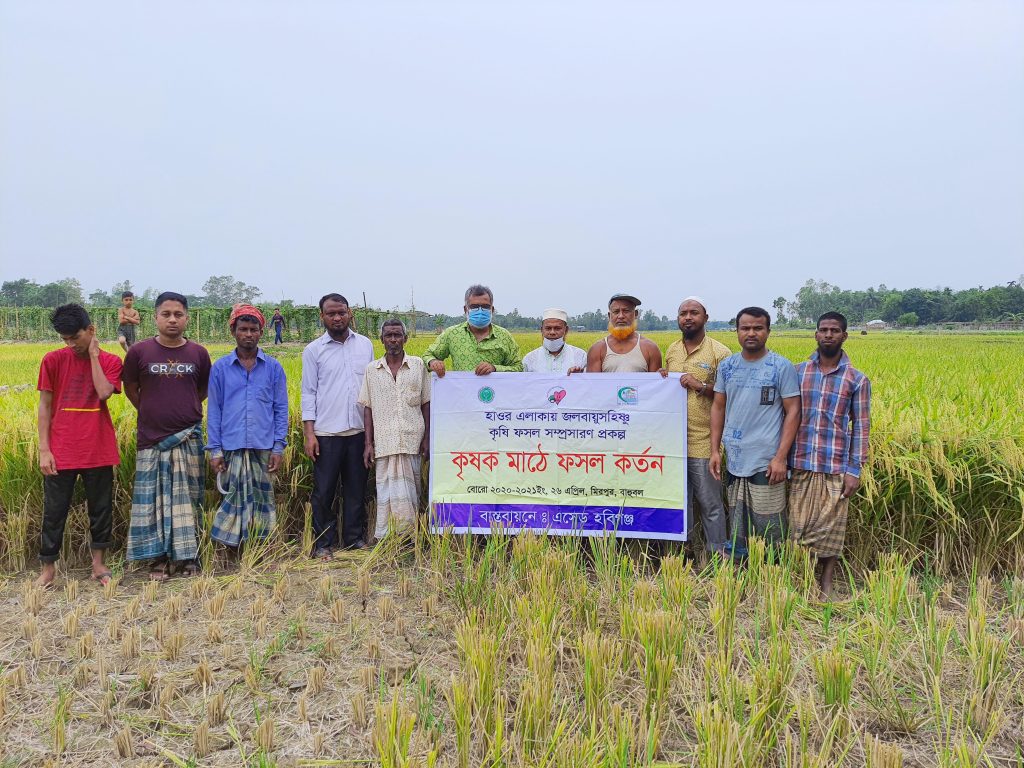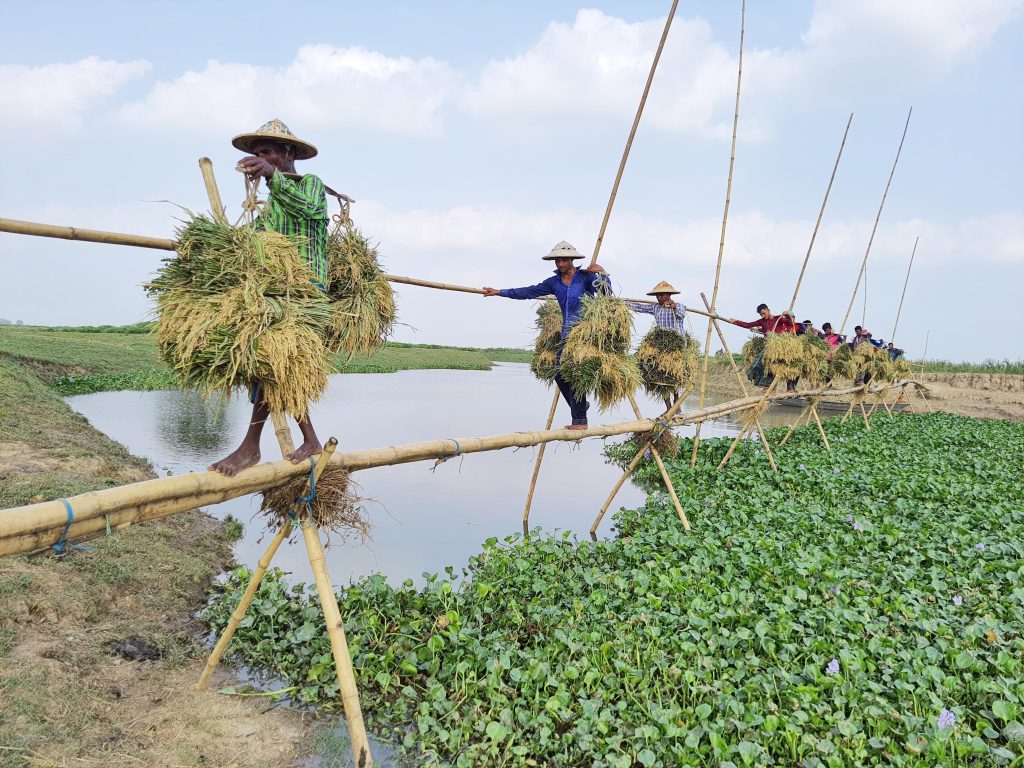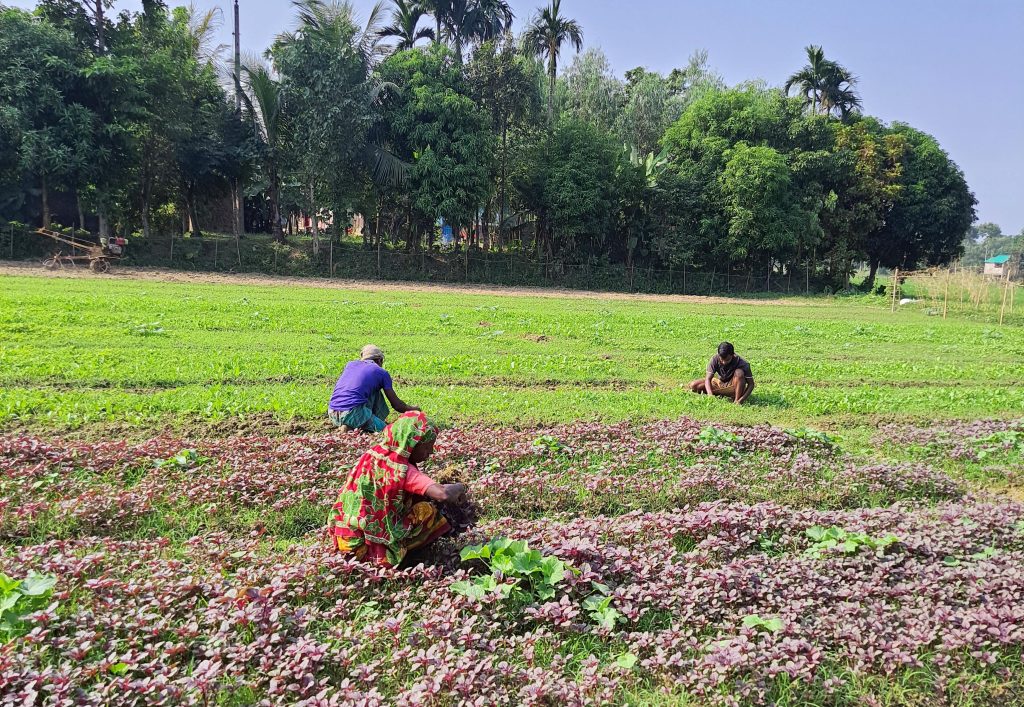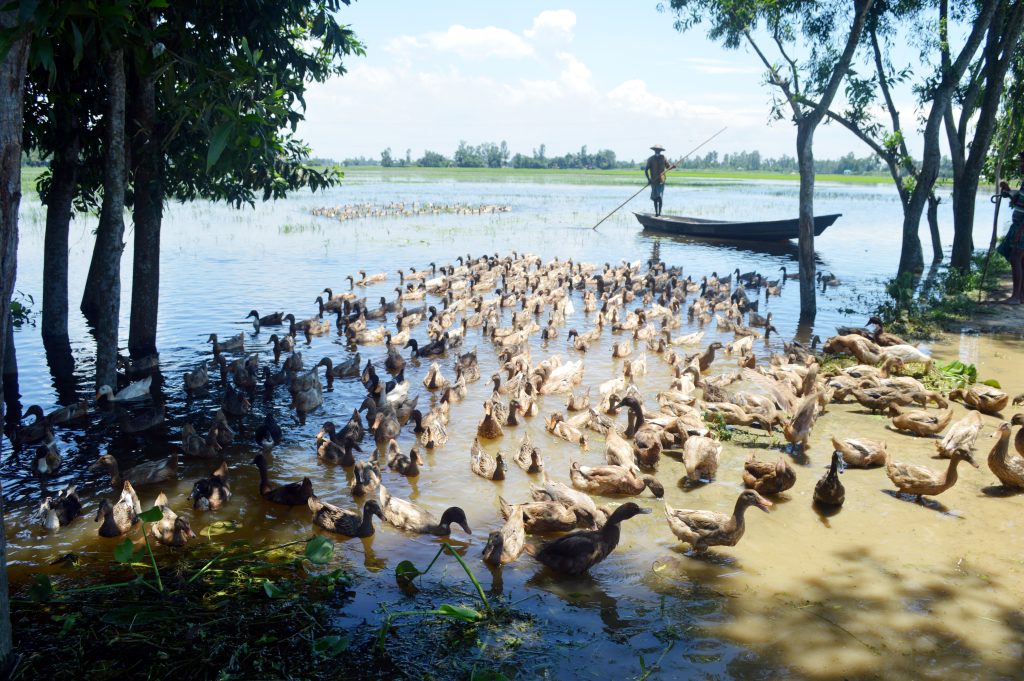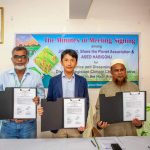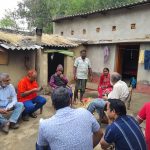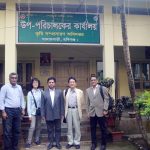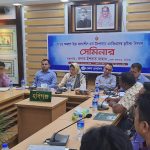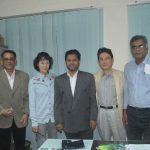This project is implementing with the support of Japan Fund for Global Environment (JFGE) and Bangladesh Rice Research Institute (BRRI). This project is the second supportive initiative of JFGE.
The project site is located in a large wetland called “Haor” in the northeastern part of Bangladesh. Haor has a geographical feature that during the rainy season, the whole area is flooded by seasonal floods and becomes a huge lake. Residents have been engaged in agriculture and fisheries taking advantage of this characteristic since ancient times. However, in recent years, disasters such as cold damage, prolonged flooding, and flash floods have frequently occurred, causing serious damage to rice cultivation. The production of dry rice in Haor was one-sixth of Bangladesh’s total during that period, and the catastrophic damage of the flood in 2017 increased rice prices by 20-40% in Bangladesh (September 2017) Daily Star newspaper dated 30). In addition, the region is extremely vulnerable to climate change and disasters, with 25-60% of rice damaged by cold damage in 2019 (Daily Manb Jamin newspaper on April 9, 2019). This area is also known as one of the least developed areas in Bangladesh.
This project aims to introduce farming methods and varieties that are resistant to extreme weather in areas that are vulnerable to such climate changes and disasters. The project was implemented in cooperation with the National Rice Research Institute (Bangladesh Rice Research Institute (BRRI) and a memorandum has been signed. The results of the activities are also shared with local governments (districts, prefectures, counties, and unions) and agricultural administrations in Habigonj (District) and Sylhet (Region) and the introduction of agricultural methods.
“The area of the Haor area, including the project site of Habigonj, occupies only 4.4% of the national land area, but the Boro rice cultivated in the dry season and harvested in April is 17.0% of the national total. It is a valuable food source in Bangladesh. Therefore, if the production of ragged rice (dry season) stops, it will have a serious impact on the national food situation. (Expert from JICA 2006)].
In recent years, due to the effects of climate change, extreme weather such as heavy rain (thunderstorms), cold damage, prolonged floods, and flash floods (floods due to flash floods) occur every year in this area. Significant declines continue. In 2017, rice prices soared throughout the country, including sudden outbreaks of flash floods and cold weather in 2019.
These vulnerabilities in the Haor region have also affected the entire country, and the Bangladesh government has positioned agricultural development as a priority in its latest five-year plan. In addition, the Ministry of Foreign Affairs of Japan’s Country Development Cooperation Policy (2018 Bangladesh) includes, in the beginning, “Aims of Development Cooperation in the Country / Region”, “Bangladesh is an abbreviation. However, there are issues such as lack of basic infrastructure such as transportation and vulnerability to natural disasters such as cyclones and floods, all of which are factors that hinder economic and social development in the country. ” “Resilience to disasters and climate change, effective use of natural resources and over-concentration in cities for sustainable development”, and the mid-term goals were “(2) Overcoming social vulnerability, poverty, hunger, Contribute to the achievement of SDGs in education, health, gender, water and sanitation, etc. (… Omitted) Disaster prevention and climate change countermeasures, mainly disaster prevention and warning, earthquake countermeasures, river management, and improvement of the living environment in rural areas. Livelihood Assistance to contribute to do. Is set to “.
Many residents of the project area are poor farmers who depend on single crop production only for dry season rice cultivation throughout the year. The elimination of rice during the dry season or a significant decrease in yields has resulted in poorer peasants becoming more poor, including domestic migration and borrowing from the informal sector. Despite this situation, the reality is that the government as well as the NGO sector have little activity here.
We, a local NGO, ASED HABIGONJ (hereinafter referred to as ASED), will target 53 elementary schools (1st to 5th graders) and 7 high schools (6th to 10th graders) in Habigonj in the three years from 2016 to 2018. Implemented comprehensive environmental education activities with the support of the Global Environment Fund. This is to increase the awareness of the local residents by encouraging the target children to acquire knowledge of the natural environment, such as the ecosystem and the mechanism of natural disasters, through beautification and tree planting in the school, and to improve the business in the future. The area was blessed with a wide variety of vegetation, and the aim was to create a climate-resistant region.
In the spring of 2017 when the project was underway, two sudden flash floods occurred in the activity area, causing catastrophic damage that almost completely destroyed rice in that area. As a result, school enrollment fell and migrants and migrants continued to flourish. Therefore, it is considered urgent for economic and social development to take root in school education by providing agricultural guidance to students and parents at the target schools and introducing early varieties. With the help of the BRRI, pilot trials were conducted to introduce early varieties that could be cut before the floods came, demonstrating that some varieties were resistant to cold damage (April 2019). Therefore, together with BRRI, we will jointly disseminate new varieties suited to the climate of this area, show a cropping system that can be planted throughout the year to farmers who depend on a single crop, and plan a business with the aim of improving livelihood It became a thing.
In the process of collaborating with BRRI, the agricultural administration’s problem was that although BRRI has been developing varieties suited to climate change and geographical conditions, it has not spread. It is. BRRI is responsible for breeding and development, DAE (Department of Agriculture Extension) is responsible for dissemination, and BADC (Bangladesh Agriculture Development Corporation) is responsible for seed production, but the coordination function among the three companies is inadequate. The problem is that it is not functioning, and as a result new varieties have not reached the farmers. Currently, varieties commonly grown in this region are hybrid rice from China and varieties developed by BRRI 25-30 years ago. In the fall of 2019, the Secretary-General of the Ministry of Agriculture attended the Secretary of the Ministry of Agriculture and announced that the seeds developed by BRRI were performing well with farmers through NGOs. At this point, the Secretary-General instructed the DAE to accelerate the movement to spread new varieties, but there was no activity on site.
